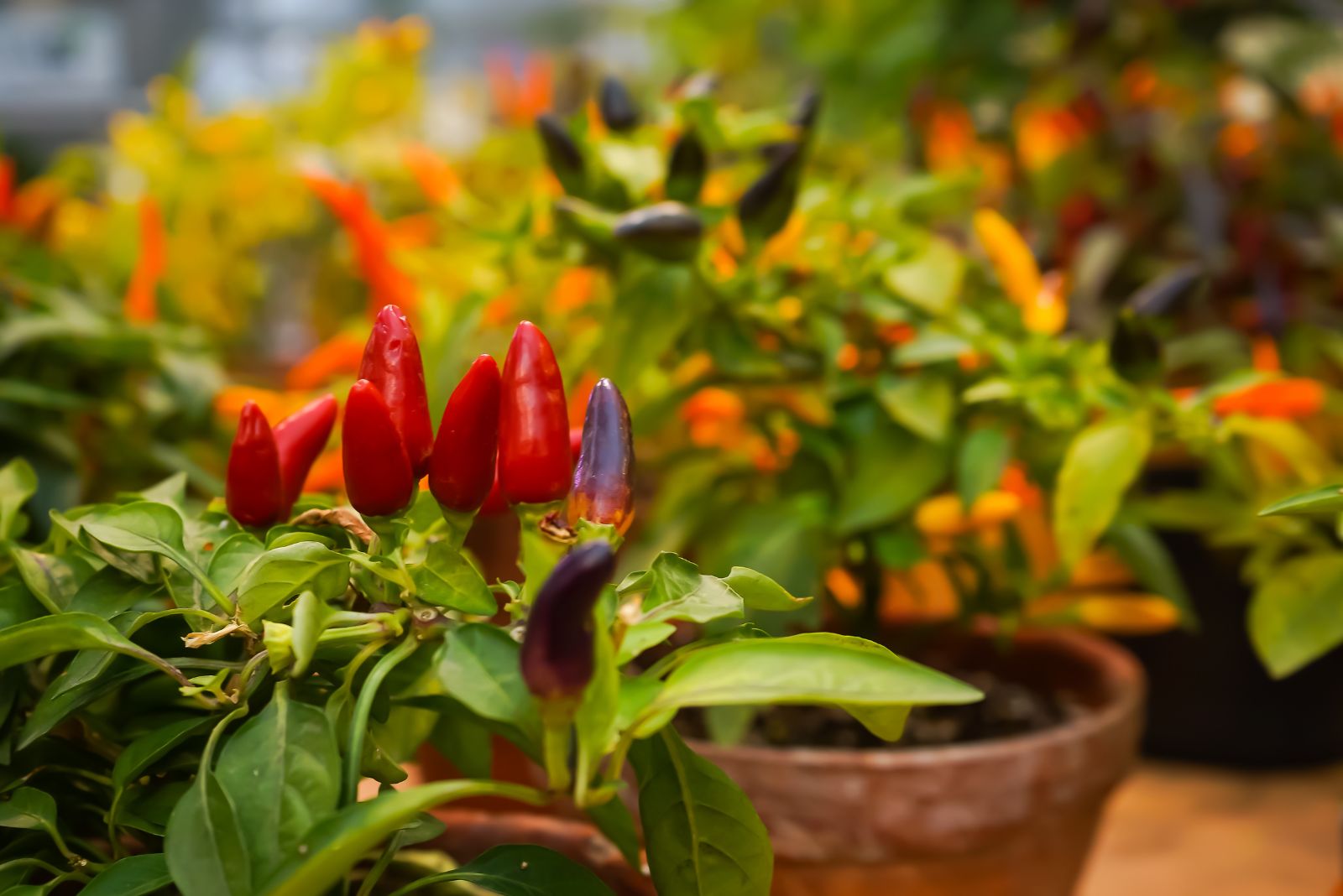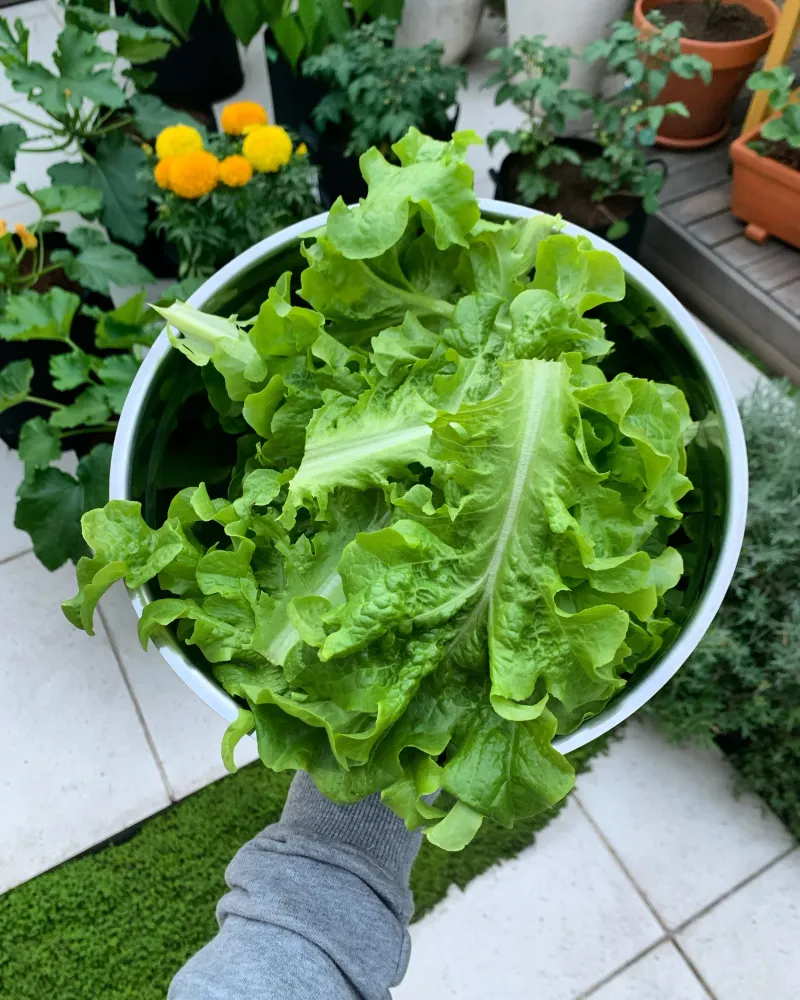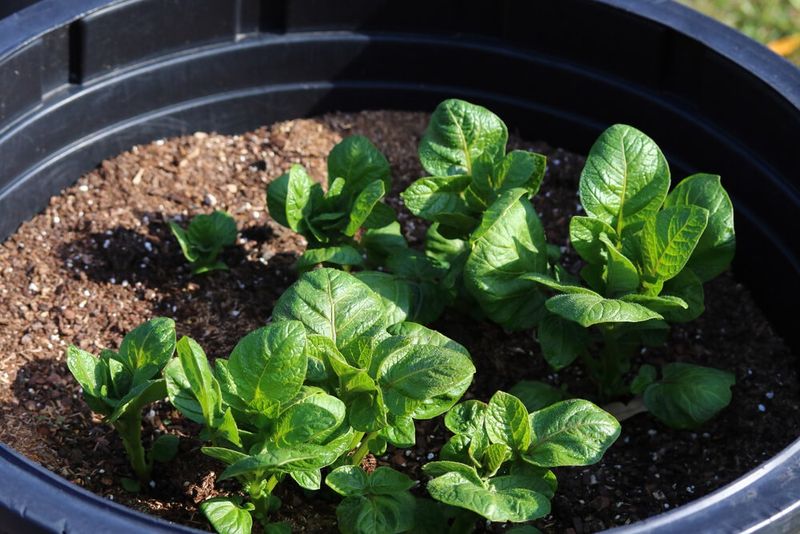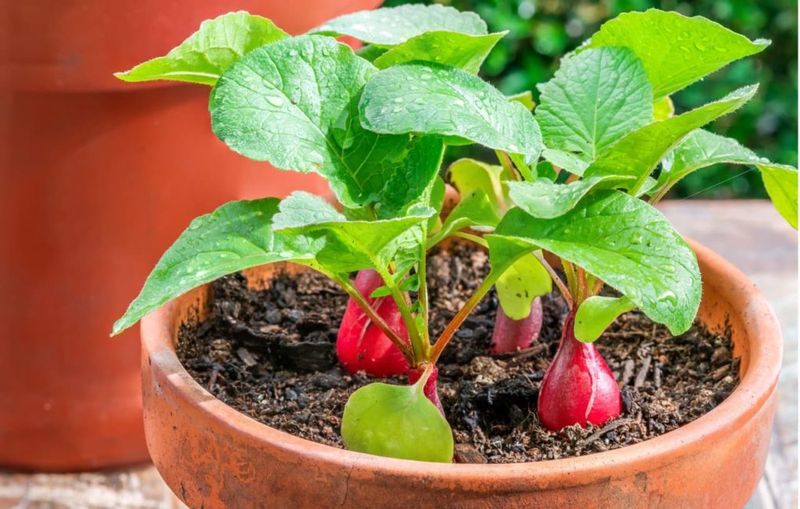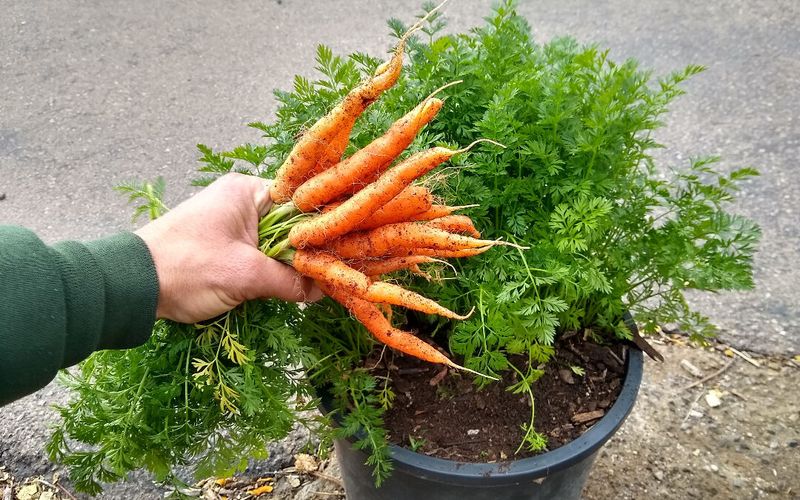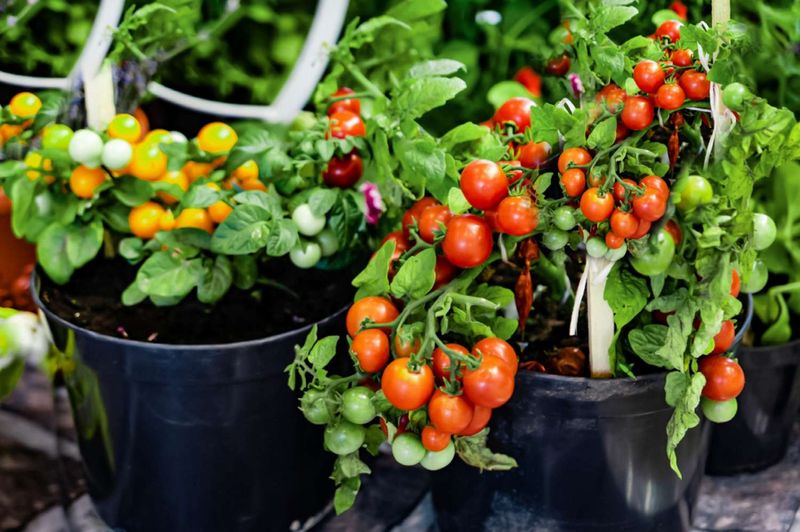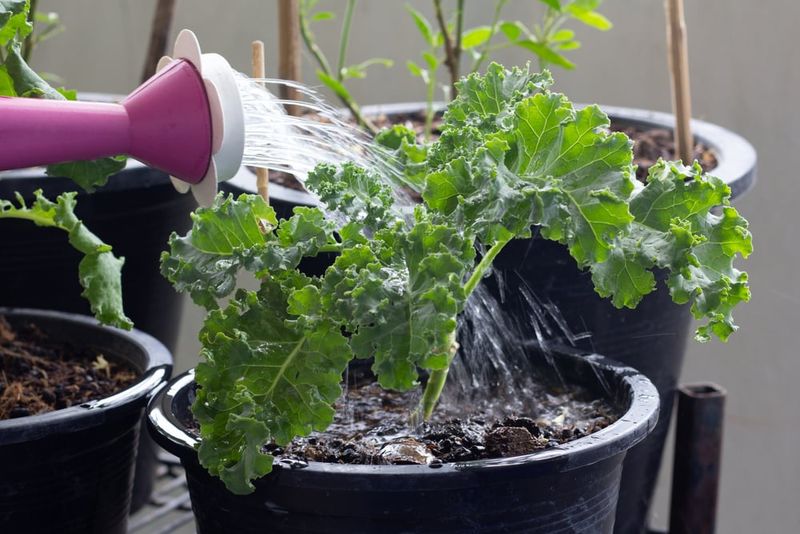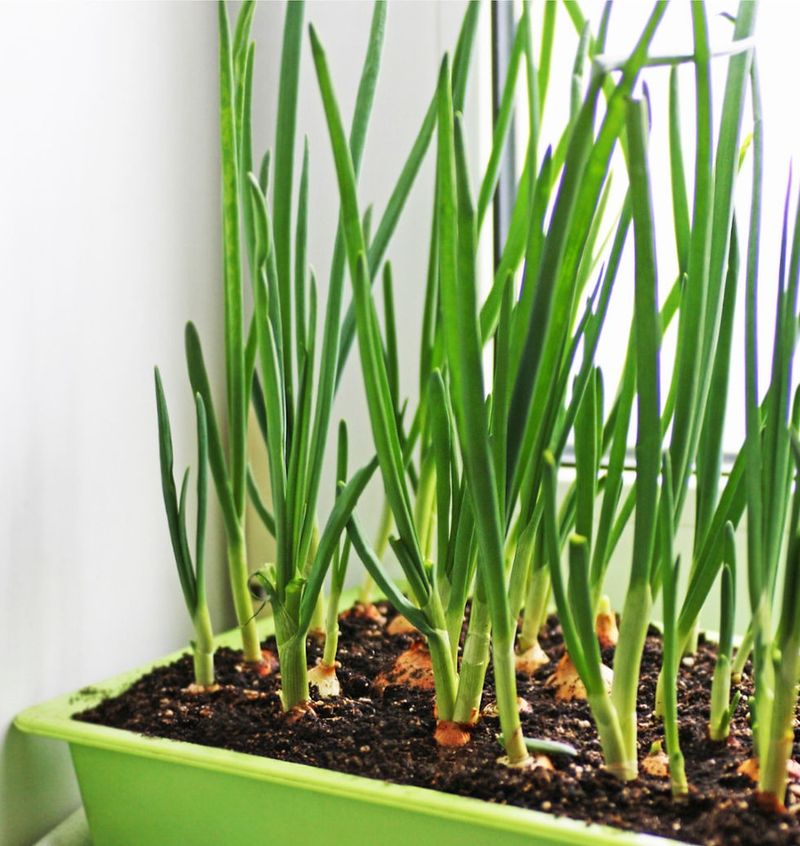Bucket gardens often turn small North Carolina spaces into surprising little food hubs. A few sturdy containers, some good soil, and the right vegetables can keep fresh produce on hand long after the summer heat fades. These plants handle shifting weather, tight corners, and busy schedules without making a fuss.
From crisp greens to steady herbs, many favorites grow just as well in buckets as they do in backyard beds. For homeowners looking to stretch their harvest through every season, these easy growers bring convenience and flavor right to the doorstep.
1. Lettuce
Crisp and refreshing, lettuce thrives in cooler weather but adapts surprisingly well to North Carolina’s changing seasons. Plant it in a five-gallon bucket with drainage holes, and you’ll have fresh salad greens in just four to six weeks.
During hot summer months, position your bucket in partial shade to prevent bolting. Leaf varieties like Romaine and Buttercrunch work best for continuous harvesting.
Simply snip outer leaves as needed, and the plant keeps producing. Water regularly to keep soil moist but never soggy for tender, flavorful leaves.
2. Spinach
Packed with iron and vitamins, spinach loves North Carolina’s mild winters and can handle light frosts without trouble. A single bucket can yield multiple harvests if you pick leaves carefully from the outside in.
Choose a container at least 10 inches deep and fill it with nutrient-rich potting mix. Spinach grows quickly in cool weather, making it perfect for fall and spring planting.
During warmer months, keep it in a shaded spot to extend your harvest. Regular watering helps leaves stay tender and prevents bitter flavors from developing.
3. Radishes
Lightning-fast growers, radishes go from seed to table in just three to four weeks, making them perfect for impatient gardeners. Their compact root systems fit beautifully in buckets as shallow as six inches deep.
Plant seeds directly into moist soil, spacing them about an inch apart. Radishes add a peppery crunch to salads and sandwiches while requiring minimal care.
They tolerate both cool and warm weather, though they taste sweetest when grown in spring or fall. Harvest promptly once roots reach marble size to avoid woody, overly spicy flavors.
4. Carrots
Sweet and crunchy, carrots need deep buckets, at least 12 inches, to develop their signature long roots. Shorter varieties like Chantenay or Thumbelina work wonderfully in containers and mature in about 60 days.
Loose, sandy potting mix helps roots grow straight without forking or twisting. Carrot seeds are tiny, so mix them with sand for easier, more even planting.
Keep soil consistently moist during germination, which can take up to two weeks. North Carolina’s climate allows for spring and fall planting, giving you two annual harvests of this beloved root vegetable.
5. Cherry Tomatoes
Bursting with sweetness, cherry tomatoes deliver impressive yields from a single five-gallon bucket. Unlike their larger cousins, these compact plants produce fruit continuously throughout the growing season with proper care.
Stake your plant early to support heavy fruit clusters as they develop. Tomatoes love North Carolina’s warm summers and need at least six hours of direct sunlight daily.
Water deeply but infrequently to encourage strong root development and prevent diseases. Pinch off suckers between main stems to focus energy on fruit production rather than excessive foliage growth.
6. Kale
Tough as nails, kale withstands North Carolina’s occasional winter freezes and actually tastes sweeter after frost touches its leaves. One plant in a five-gallon bucket provides weeks of nutritious harvests for smoothies, salads, and cooked dishes.
Plant kale in fall for winter harvests or early spring for summer greens. Harvest outer leaves first, allowing the center to continue producing new growth.
Kale tolerates partial shade during hot months, making it incredibly versatile. Regular feeding with balanced fertilizer keeps leaves tender and flavorful rather than tough and bitter.
7. Green Beans
Productive and rewarding, bush bean varieties thrive in buckets without needing trellises or complicated support systems. Plant four to six seeds per five-gallon bucket, and you’ll enjoy fresh beans in about 50 days.
Beans fix nitrogen in soil, actually improving it for future plantings. They prefer warm weather, so plant after the last spring frost and again in midsummer for a fall harvest.
Pick beans regularly when they’re young and tender to encourage continuous production. Avoid watering overhead to prevent fungal diseases, which can spread quickly in North Carolina’s humid climate.
8. Peppers
Colorful and versatile, peppers transform from green to red, yellow, or orange as they ripen, adding visual appeal to any container garden. Both sweet bell peppers and hot varieties flourish in five-gallon buckets with proper drainage.
Start with transplants rather than seeds for faster results in North Carolina’s growing season. Peppers need consistent warmth and sunshine, making them perfect for south-facing patios.
Support plants with small stakes as fruit develops to prevent branches from breaking. Water regularly but avoid overwatering, which can lead to root rot and reduce fruit production significantly.
9. Swiss Chard
Stunning and nutritious, Swiss chard brings rainbow colors to your bucket garden with stems in red, yellow, orange, and white. This heat-tolerant leafy green produces abundantly through North Carolina’s long growing season, even during summer heat waves.
Plant seeds directly in a five-gallon bucket filled with rich potting soil. Harvest outer leaves regularly, leaving the center to keep producing new growth for months.
Chard rarely suffers from pests and tolerates both cool and warm weather beautifully. Its mild flavor works wonderfully in both raw salads and cooked dishes.
10. Scallions
Quick and easy, scallions grow from seed to harvest in just 60 days, providing fresh onion flavor without the wait of bulb onions. Plant them densely in any size bucket, even a small two-gallon container works perfectly.
Their shallow roots make them ideal companions for deeper-rooted vegetables in shared containers. Scallions tolerate North Carolina’s temperature swings remarkably well, growing year-round with minimal protection.
Harvest by pulling entire plants or cutting tops and leaving roots to regrow. Replant every few weeks for a continuous supply of these flavorful additions to countless recipes.

